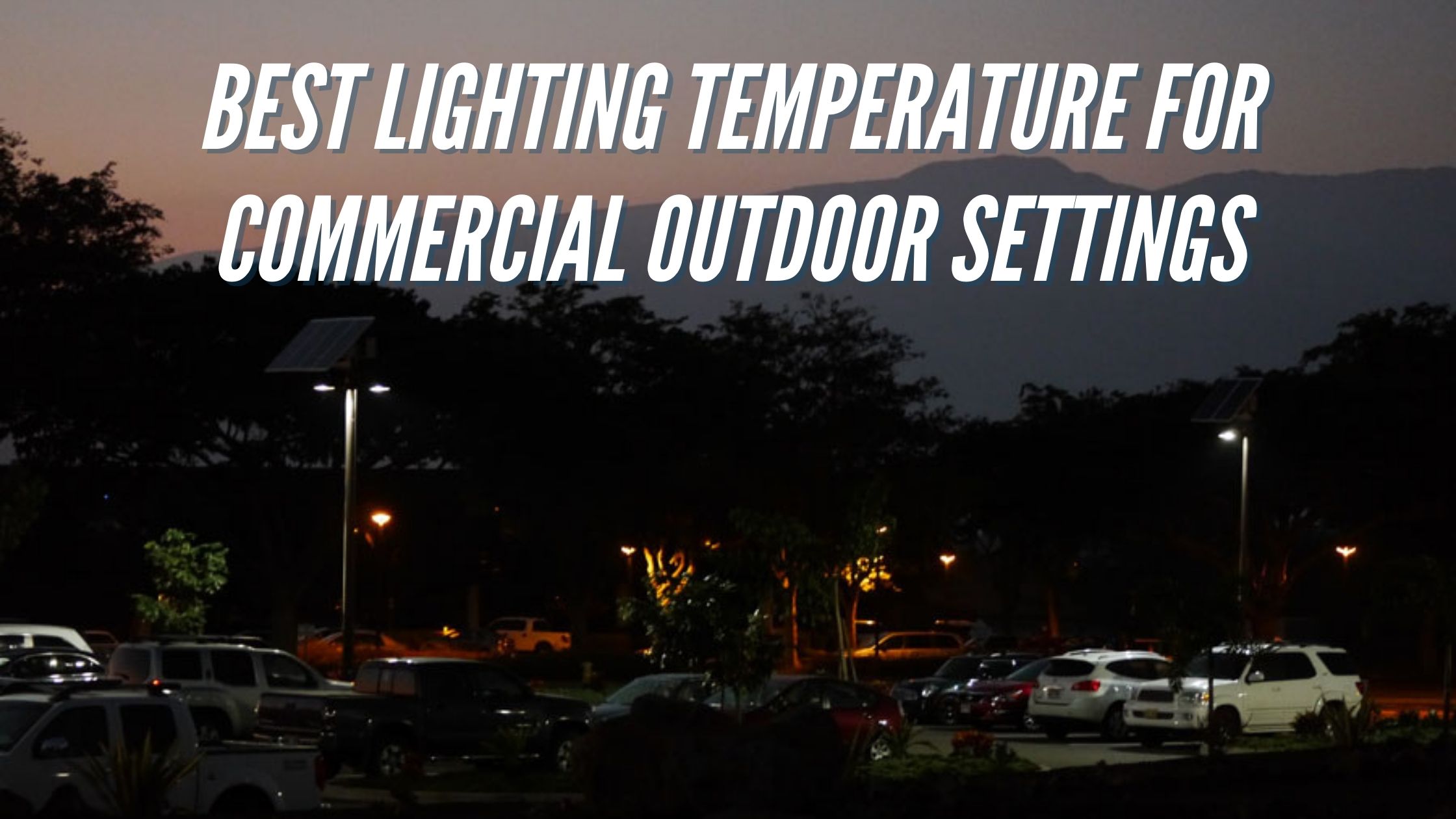


Most of us are familiar with light intensity, brightness, and even color. These are all crucial aspects when lighting any commercial building. Just as important, however, is the temperature of the lighting itself.
Lighting temperature doesn’t refer to the heat released from the bulbs. Instead, warm light vs. cool light comes down to mimicking natural light for specialized needs. For example, creating secure areas in parking garages or accentuating an appetizing mood within a restaurant. These are just a couple of ways that commercial lighting temperatures can affect many business areas. Understanding the light temperature can thus ensure that commercial buildings are perfectly illuminated.
To begin, we must understand lighting temperature. The term refers to the spectrum of Kelvin scale temperatures that control light color. This temperature scale ranges from 1,000 to 10,000 Kelvins (K), corresponding to the orange of a candle flame up to the bright blue of a clear sky.
These colors also correspond to the natural sunlight that we see every day. Direct sunlight measures around 4800K, creating a vibrant white light that makes excellent illumination for most needs. Orange-hued warm lights create feelings of comfort, closeness, and warmth. On the other hand, cool blue colors increase performance and alertness. Picture the bright white fluorescence of office lighting.
Commercial buildings must pay extra attention to the temperature of their lighting. From safety features to customer experience, proper light temperatures are essential.
Cool light temperatures mimic daylight, such as those produced by 5-6K light fixtures. This light color provides better visibility and is great for parking lots or other open areas. In addition, cool-temperature lights can ensure that critical areas stay illuminated and safe.
For instance, bus stops and payphone areas often enjoy high-temperature light fixtures. Likewise, courtyards and lobbies can benefit from higher-temperature lighting at night. In addition, the added clarity from blue light helps reduce shadows.
However, blue light also pollutes the night sky more than warm light. When used excessively, it is harmful to wildlife, as it can disrupt normal life patterns. Most commercial lights stay below 3000K to avoid possible destructive results. This temperature provides plenty of warm, sunrise-like illumination without any detrimental effects on wildlife or humans.
Commercial building managers should examine their properties at all hours. Different areas of a building will need different illumination at various times. As well, not every facility will face the same conditions as others. Some won’t have to worry about wildlife impact; others must follow local guidelines on light pollution. Understanding how to use and control lighting temperatures can benefit the building itself and the surrounding community.
Outdoor lighting for any commercial building is essential for many reasons. Safety and security at all hours depend on reliable illumination, regardless of the business. Also, many businesses use specialized illumination for enhanced advertisement and optics.
Maximizing light temperatures will expand upon the existing uses of outdoor commercial lighting. Focusing on warmer blue temperatures will create clear areas for safety. Parking garages, alleyways, and dark corners can benefit from warm blue lighting. However, as stated before, blue light is detrimental to wildlife, and excessive blue lights can lead to urban light pollution.
The best illumination comes from a clever mix of warm and cool light tones, especially when wanting to maximize all aesthetic and safety concerns. During the day, lighting should complement the natural light. This warm and natural lighting is great for welcoming patrons and enhancing the comfort of a venue. Still, even in the coziest bistro, cool lighting in the kitchen will help ensure top food preparation and ultimate plating.
In non-public buildings, lighting temperature should follow the needs of the occupants. Cool lighting is energizing and helps promote productivity. Office and creative settings can thus benefit and thrive beneath carefully honed cool lighting. On the other hand, warm accent lights and decorative lighting can help create a welcoming environment for employees, particularly throughout common areas such as hallways and lobbies.
Ultimately, any commercial building can achieve the exact lighting it needs for peak performance and comfort.
In the end, controlling the lighting temperature is as important as the lights themselves. Different temperature ranges are better suited for different needs. A commercial building can create a campus of safety, warmth, and inclusion by optimizing light temperatures.
Take the time and learn the building’s illumination needs for every hour of the day. Be sure to consider traffic, surrounding landmarks, and wildlife implications. Don’t forget to account for lighting changes throughout the year. Seasonal changes can bring different lighting needs. Being ready and modular with the appropriate light settings will ensure that your building remains perfectly illuminated.
